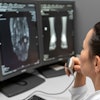
The COVID-19 pandemic made it clear that radiologists work in a changeable world, and that it's important to take measures to maintain resilience, according to a paper published February 17 in the Journal of the American College of Radiology.
A team led by Luke Verst of the University of Washington in Seattle suggested nine ways radiologists can cultivate "antifragility" amid challenges and change, defining the term as "growth through hardship."
The strategies include the following:
- Accept unpredictability. "We must normalize unpredictability and surprises ... [and doing this] may allow us to take the first step in becoming antifragile in medicine," the group wrote.
- Use the "barbell strategy" to mitigate risk. Balance being risk-averse and "risk loving." For example, radiologists face risk in hospital contracts, and generating side gigs like "expansion into other markets, investment in a new outpatient imaging center" or starting a blog or YouTube channel can mitigate this risk. "Focusing 10% of one's time on an enjoyable side hustle may eventually reap significant reward while hedging against unpredictable outcomes," the team noted.
- Make use of mistakes. "Errors can be an investment ... [providing] vital information on how to improve," Verst and colleagues wrote.
- Maximize options. "To become antifragile, expand your optionality," the authors urged, referring to working part-time, changing practice type or location, and planning retirement. "Optionality means having choices available for which you have the right, but not the obligation, to act upon," they noted.
- Increase capacity. "Systems may benefit by implementing a 'redundancy buffer,'" the group wrote. "Although redundancy seems to reduce efficiency, it may allow better handling of stressors and unexpected challenges such as the postpandemic surge in clinical volumes."
- Do more, hypothesize less. "Antifragility embodies practice over theory," Verst and colleagues noted.
- Distinguish signal from noise. Radiologists must "learn to discern signal from noise" in the medical field and not "overreact to noise while missing the signals." One way to do this? Set up table-of-content alerts for a few key publications to get an overview of clinical or technological updates in the field.
- Put the negative to use. Focus on "saying yes to what you're working on and no to everything else," the team urged. "A 'less is more' heuristic can be useful when making decisions."
- Keep the big picture in mind. Recognize that your decisions and actions affect others. For example, radiologists in private practice are "motivated to do what's best for the practice since personal failure will lead to collective consequences," the authors noted.
Growing one's resilience takes concentrated effort, but those efforts are worth it, according to Verst and colleagues.
"Antifragility can be a valuable tool to help radiologists grow through challenges and become stronger [in the face of] unpredictable changes," they concluded.




















